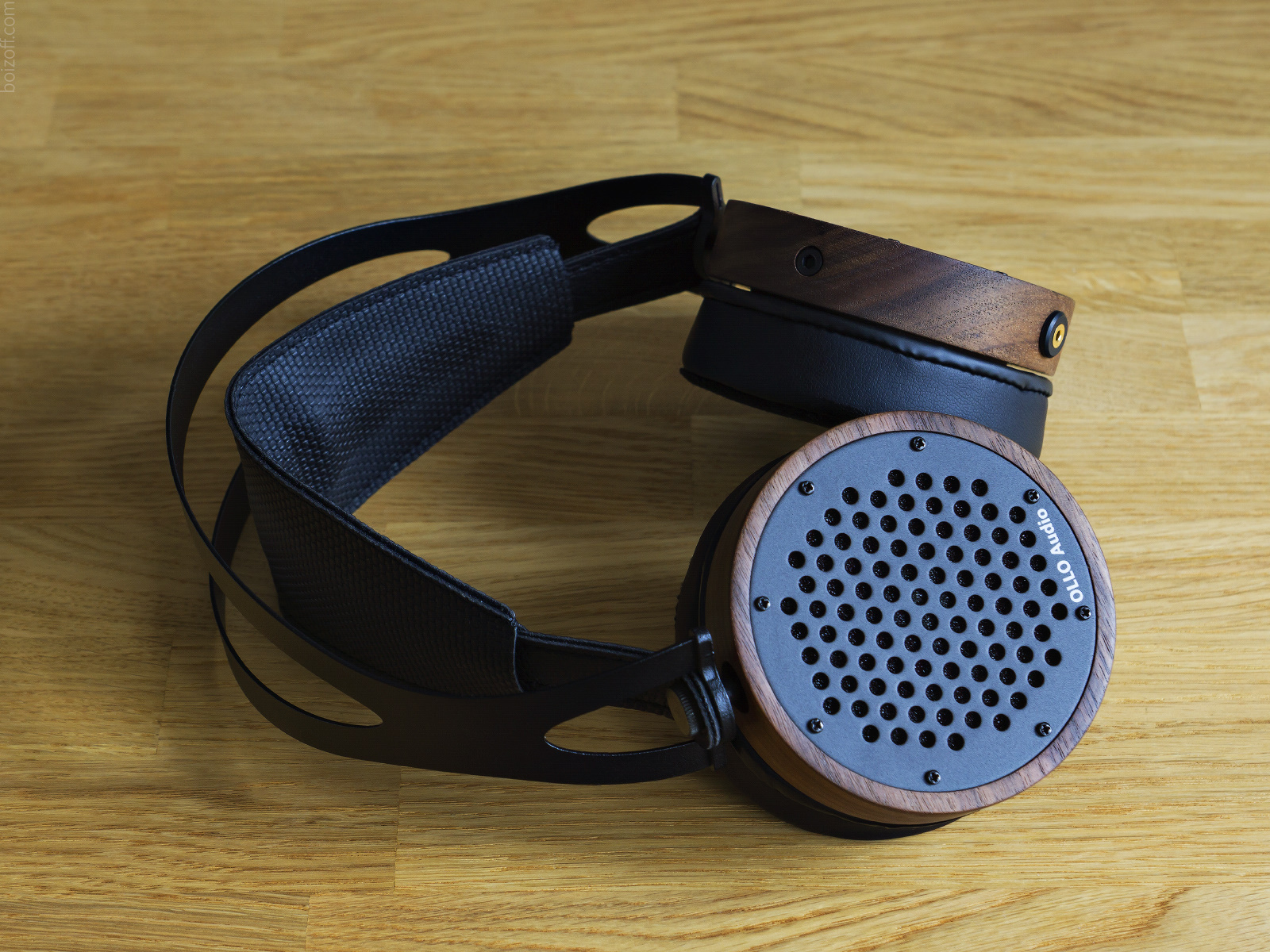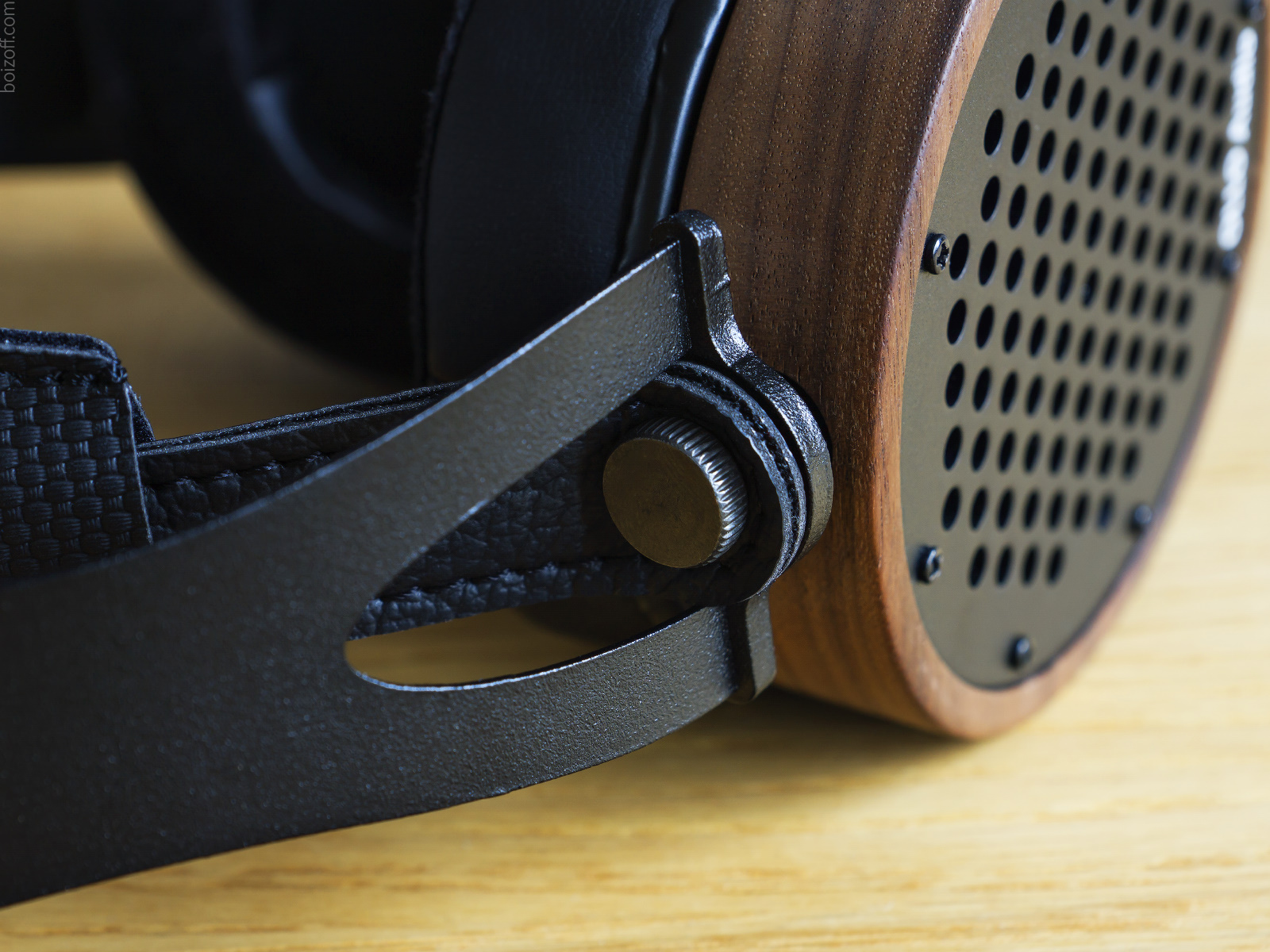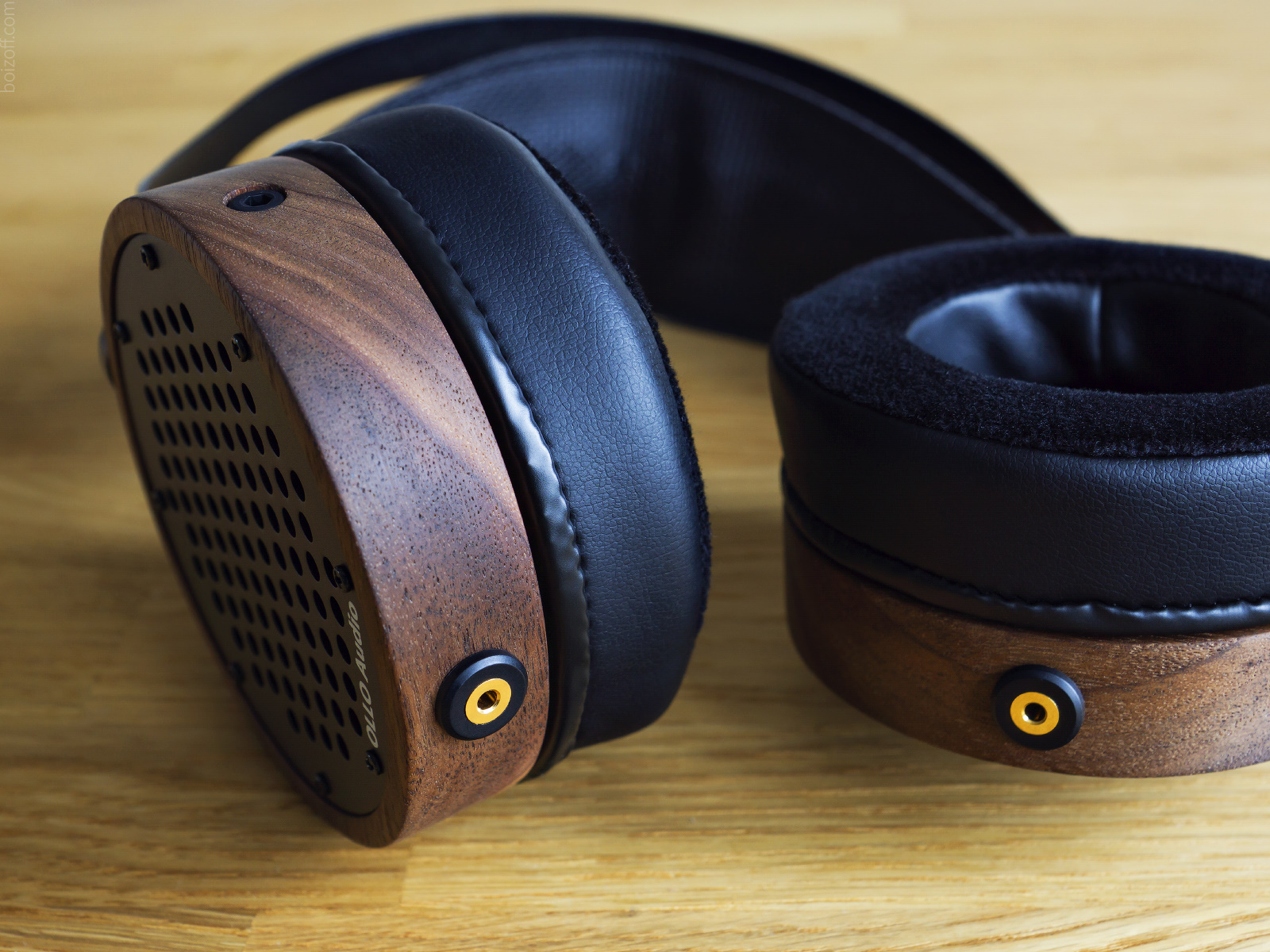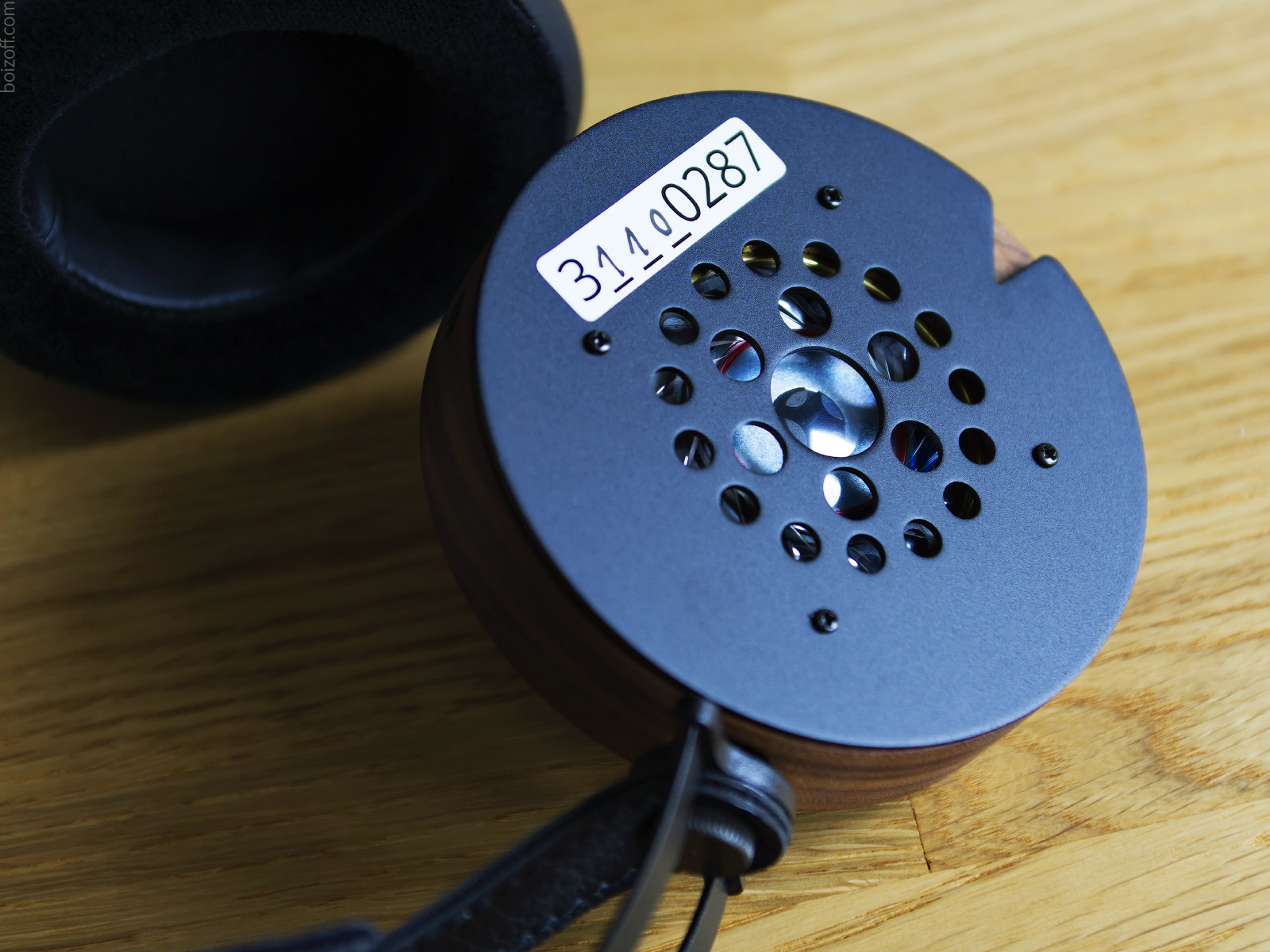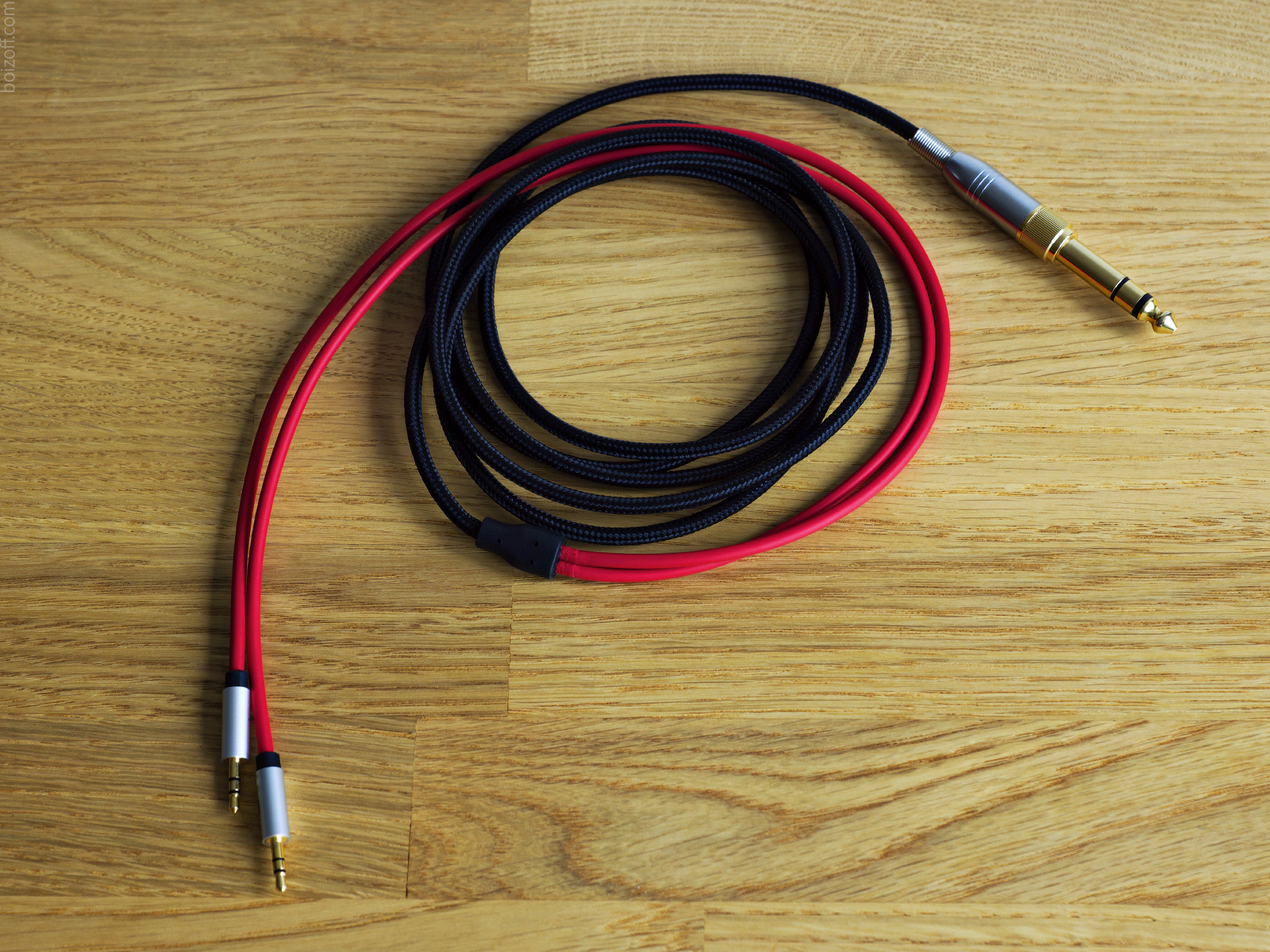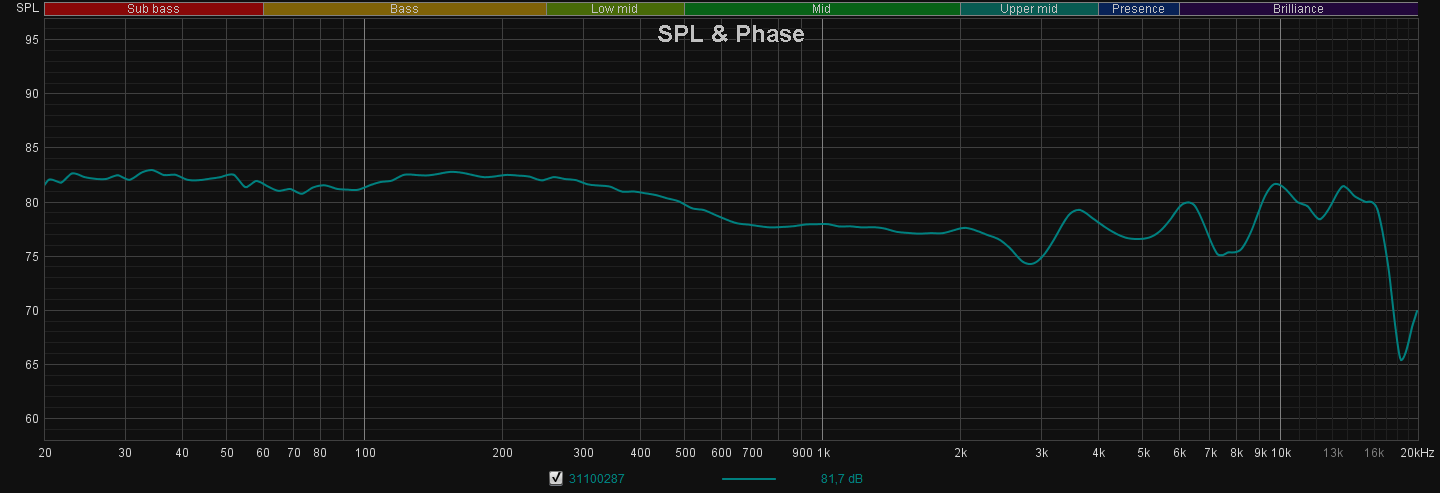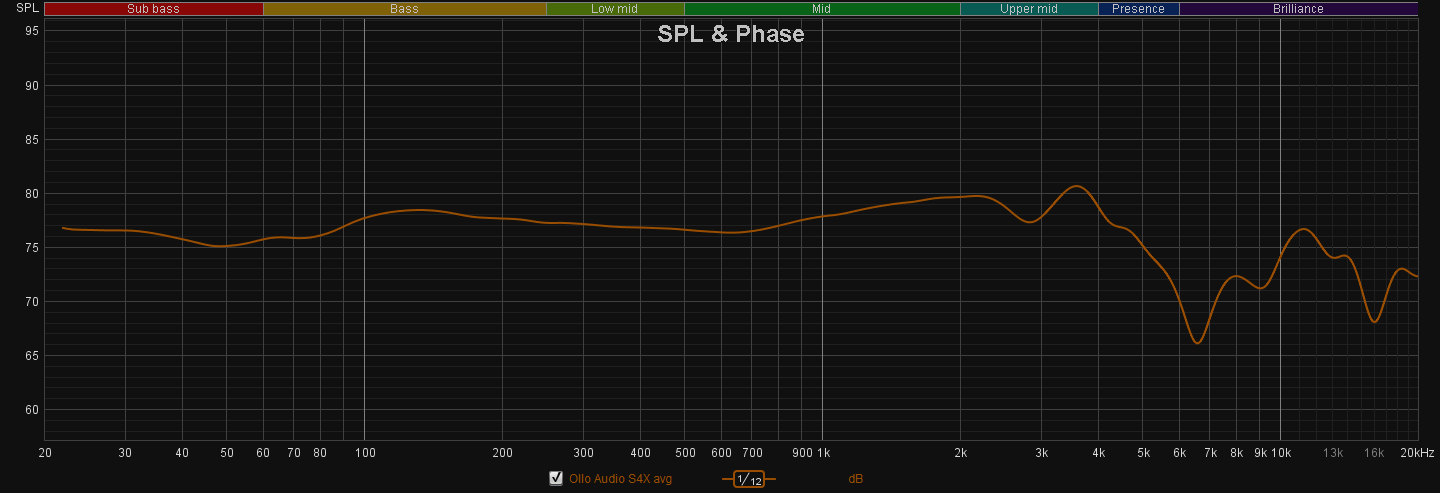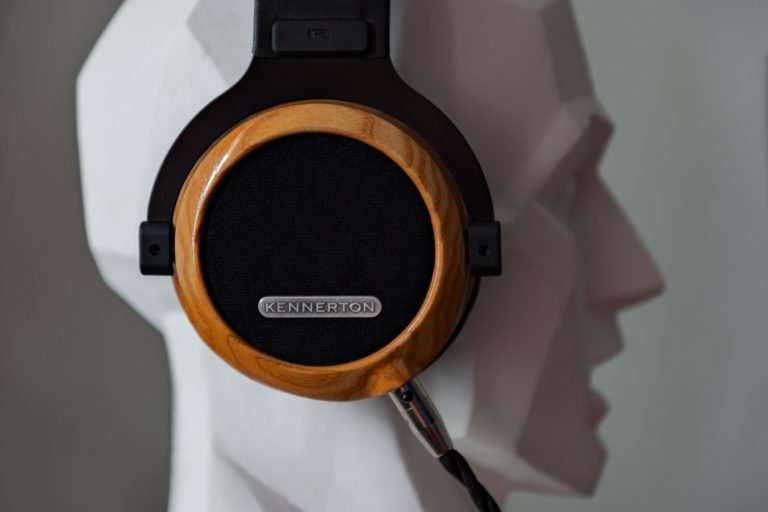Ollo Audio S4X Headphones Review
The Slovenian Ollo Audio company manufactures headphones since 2015. Both two current Ollo models are for musicians, sound engineers and other professionals whose everyday tasks are related to sound.
Today we have an open-back S4X model to review (product page).
Spoiler: these headphones are darn good.
All images are clickable to enlarge.
Model position and price
The manufacturer sets the S4X as a tool for sound engineers, or rather as headphones for music mixing. All S4X instances are checked against the IEC 60318-1 standard (‘Part 1: Ear simulator for the measurement of supra-aural and circumaural earphones’). The manufacturer describes this model as ‘neutral and extremely true’, and also emphasizes that for each pair of headphones, driver pairs are selected specifically in such a way as to minimize differences in frequency response (no more than 2 dB).
There’s an impressive list of sound engineers who use Ollo headphones on the manufacturer’s website.
As on the day this review was written, the headphones costed 399 euros. Or, if you really need them but can’t afford them right away, there’s an installment plan option with 159 euros as the initial payment and then 20 euros payments during the year.
Design solutions, build quality and style
A steel headband serves as a base of these headphones. Under the headband, there’s a self-adjusting pad, which presses against the top of your head when you put the headphones on. The vertically rotating earcup yokes are attached to the metal frame of the headband.
The hinges are quite tight, so the earcups don’t hang loose.
The earcups themselves are made of stabilized American walnut and have an extremely simplistic cylindrical shape without any decoration on them. On the outside of the earcups, there are steel grids with the manufacturer’s logo attached by screws. The left/right channels indications are nowhere to be found, since the earcups are completely symmetrical. The connectors are oriented vertically down.
That is, you decide which earcup is going to be left or right today by shoving the respective cables into the two jacks.
If you remove the earpad, you’ll see a unique identification number of your driver pair on the protective grid (again, made of steel) on the inner side of the earcup.
The earpads are 90 mm in diameter and covered with faux leather, but what really touches your head are the artificial velvet overlays. The earpads themselves don’t have any bevel. They’re stuffed with PU foam with a memory effect, and between the earpads and the protective mesh of the driver there’s a round piece of synthetic material. If I get it right, this round guy adjusts the frequency response of the headphones.
The provided cable is 2 meters long. It’s connected to the headphones via 2.5 mm jacks, and via 3.5 mm jacks to the sound source. There’s also a 6.3 mm adapter provided – just in case.
For one and a half meters up to the splitter, the cable is protected by a black fabric braid, and from the splitter up to the headphones the braid is red rubber. You can tell the channels apart only by the letters L and R on the connectors.
As for the design, it fully corresponds to the manufacturer’s vision of this model: the S4X are perceived primarily as a tool, not a fashionable accessory or a living room decor item. I’d also note that the headphones have the German Design Award in the Excellent Product Design – Entertainment category.
The manufacturing quality is out of question: no gaps or unwanted notches anywhere, no traces of poor finishing, no low-quality painting of details or other manufacturing botches. The only thing I’m somewhat confused about is the quality of rubber (that red one) part on the cable. It feels very thin and pretty unreliable. These are only suspicions, though: 2 weeks of constant use, and nothing bad happened to it.
The manufacturer is so confident about the quality of their products that they provide a 5-year warranty on headphones (except for the cable and the earpads). There’s also a separate section on their website where you can buy any spare parts you’d ever need for this model. I mean – any at all, even drivers. If purchased separately, the cable will cost you 32 euros, and the earpads – 25 euros. And, if my arithmetic is correct, the complete S4X self-assembly kit costs 262.01 euros. It makes me feel good. 😊
I’d also point out that an unconditional return of headphones to the manufacturer is available within a 30-day period. That is, if you didn’t like the headphones, just send them back and get your money refunded. Of course, there should be no scratches, dents or bodily fluids stains on them, in other words – the headphones should look intact as they were in their original package.
What else is included:
- A piece of paper saying not to press the headphones against your head or to any other surface agressively
- A measurements sheet for this pair of headphones
- Instruction manual
- A certificate of authenticity with a unique headphones’ identification number (or a pair of drivers, to be more precise)
A plastic case for storing and carrying the headphones
Usage experience
The design may seem a bit too simplistic, though not without some elegance, and the fit is just awesome. The artificial velvet overlays don’t cause chafing, the side pressure is just right, and the yokes allow you to adjust the angle at which the earcups press on your head. And even the small diameter of the earcups doesn’t ruin the overall impression: with S4X, you can wear them for a very long time. My uninterrupted maximum was 8 hours. That being said, I felt no discomfort even though my ears (pretty average in size) don’t fit inside the earpads completely, and the earlobes get trapped between my jaw and the earpads. The headphones are open-back, but their cushioning is tight enough, so in a few hours my ears started to warm up and sweat a little. But just a little, so please don’t rush to remove the headphones from your cart. The self-adjusting headband is also very comfortable: almost all its surface touches your head providing perfect weight distribution.
The cable is pretty light (40 grams together with a 6.3 mm adapter) and thin, and doesn’t cause the microphone effect. There’s a small confusion every time before you pop the headphones: you need to twirl the headphones in your hands to determine which channel is which. It’s not quite clear to me why they quit the standard blue/red channels marking, it was so much more convenient for me.
It’s also somewhat unsettling that when you put the headphones on the table, they rest right on the surface of the wooden sides of the earcups and can potentially be scratched or worn out over time. But again, it’s only an unsupported assumption, since nothing bad happened to my pair in 2 weeks of continuous use. On the other hand, these were designed primarily as a professional tool, so I think it’s okay when a tool has a couple of scratches on it. Did you ever see a hammer drill that’s perfectly clean and smooth? That’s right, only if it’s never used.
As for the usability, there are actually no complaints about the S4X. They turned out to be very comfortable, much more comfortable than 99% of any other models available on the market.
This was unexpected, to say the least.
Technologies and ‘made in’ countries
The manufacturer doesn’t specify any technological details or features of the S4X, except that the 50 mm speakers use a 2-layer coil, and the mylar (dacron, polyethylene terephthalate) speaker membrane has a thickness of 25 μm.
The drivers are made by Ollo’s special order in China. The earpads and cables come from China, too.
Specifications and the required sound source
- Impedance: 32 Ohms.
- Sensitivity: 108 dB.
- Weight: 370 grams.
The RME ADI-2 DAC lets the S4X to swing up to the sufficient volume in Lo-Power mode even at -40 dBr with the 6.3 mm adapter output. They actually deliver a complete sounding even with the in-channel headphones output. When connected to Galaxy S10, the volume is sufficient at about 70%. But still, I wouldn’t say that the ‘smart devices ready’ claim is 100% true, since the S4X sport a noticeable increase in dynamics and sub-bass quality when increasing the amplifier’s power.
That’s why I’ve just stuck with the RME ADI-2 DAC with Hi-Power setting.
Listening experience: first impression
The listening time made a total of about 55 hours. Before that, there was a 20-hour warm-up allowed, although the manufacturer recommends to warm them up for about 100 hours.
In the first few minutes of listening, I noticed two things. The first is that the S4X definitely aren’t made for entertainment or to surprise the listener in any way. Their sounding is, well, boring. The second thing is that despite the boring sound delivery with what seems to be a highlighted mid-frequencies range, the S4X reproduce an incredible number of details.
And after a while, everything fell into place.
The S4X are perfectly balanced. The bass and the lower section of the mid-frequencies range seem to be reinforced by 1-2 dB; the upper section of the mid-frequencies and the upper-frequencies range seem to be let down by 1-2 dB. You kind of hear it, but it’s so subtle! Anyways, you don’t really pay attention to this, because the headphones maintain an excellent overall balance over the entire frequency range and don’t seem to reproduce any sharp peaks or dips at all. This gives an amazing sense of frequency separation – the bottom section doesn’t mix with the upper one, and the upper itself doesn’t outvoice the middle section. Analytical listening, musical pieces dissection – that’s what the S4X are perfect for.
The S4X don’t make the mid-frequencies range stand out – it’s just that the headphones don’t make the lower- and the upper-frequencies ranges sound any pointer. That’s why our brain, being spoiled by the so-called ‘audiophile’ type of sounding, gets a bit confused.
These headphones make it possible to tell a huge number of details, and not at the expense of the raised upper-frequencies, but due to the fact that no section of the frequency range is dominating the others, and the driver has enough speed to move sufficiently fast. I’m not quite sure whether this was one of the manufacturer’s goals, but the headphones combine the ability to produce a detailed, though not tiring sounding. The S4X don’t make the listener immerse in a vortex of different sounds, but precisely serve each note of a track literally up to a tittle.
I’d also note that in terms of external and internal sound insulation, these headphones are actually closer to semi-closed designs then to open-back ones. The music can be heard from the outside, but not like in fully open-back models. At the same time, the headphones themselves provide the listener with a small but still noticeable sound insulation.
So, according to the first impression, the S4X fully correspond to their purpose and to the manufacturer’s vision; their specialization is extremely smooth, detailed, but at the same time comfortable sound, which is indispensable for analytical listening and mixing music for a long time. I myself would add that even to me as a fan of neutral setting and a guy who listens to music in different ways including with the Mackie MR5mk3 + ADI-2 DAC (with a bit flattened room resonance), such sound delivery seems even more refined than I’m used to.
Audiophiles usually refer to such sound as ‘reserved’.
Well, while we’re on the subject of headphones for creating music, it’s worth mentioning that the drivers are well chosen in the context of the frequency response difference: when testing a swipetone, the sound almost never moves to the left or to the right, remaining strictly in the middle.
The lower-frequencies range
The sub-bass has an excellent length, but it’s delivered very sparsely, which is why some of the tracks relying on this part of the frequency range as a dominant sound somewhat less large-scale, less grandiose than you expect it to. Yes, it’s collected, very technical, but not exciting. For example, the sub-bass at the beginning of the Purple Eyes by The Toxic Avenger sounds legible, but doesn’t make your eardrums waver a little. In Mercy by Clubroot, Grima by Danheim, or Svanrand by Heilung, the ultra-low-frequency vibrations don’t envelop your brain, and the headphones just play: pretty quickly and technically perfectly. Quantitatively, there’s enough sub-bass, its speed characteristics are excellent, but its pressure is somewhat lower than expected. The driver seems to have an insufficient oscillation amplitude or some other design limitation that won’t allow it to push a large enough air volume to create the desired sound pressure.
The bass, on the contrary, is delivered with the necessary vibe and weight, if any of these are present in the recording itself. The drums and the bass guitar sound with significant pressure, and that results in a larger sounding scale, where necessary. The speed characteristics don’t worsen, and the hurricane parts of thirty-second notes are reproduced quite legibly, without buzzing. Want some examples? Here they are: We’re Not Gonna Fall by Children Of Bodom (R.I.P. Alexi Laiho ☹) or People = Shit by Slipknot.
Mid-frequencies range
The mid-frequencies are completely flat and without a dip in around 2 kHz by ear. These sound bald and detailed, without a hint of shrillness. Due to the flat area around 2 kHz, the voices sound close to the listener, so in this context, the headphones create a rather intimate atmosphere between the band and the ear. For example, in the Working Class Hero by Ozzy Osbourne, the voice feels like sounding just an inch from your ear, and in the Myrkur by Reiar, each individual voice in the polyphonic chorus is very well differentiated; the piano, the acoustic guitar and the violin sound extremely realistic. Try listening to the Unaccompanied Cello Suite No. 1 in G major, BWV 1007: I. Prélude by Bach performed by Yo-Yo Ma with the S4X: this will blow your mind. These headphones have smooth, balanced and transparent mid-frequencies range: some of the best, if not the best in their class.
Due to the very smooth tuning, the lower and medium frequencies are combined in a very harmonious and legible way, there are no accents and everything is audible.
Upper-frequencies range
The upper-frequencies range is reproduced almost flatly for my hearing, though evenly quieter by 1-3 dB than I’m used to. The headphones seem to be slightly short of air, because there’s a dip around 6.7 kHz, which is clearly distinguishable by ear. The formal detailing is still here, and all the nuances are audible: it’s just the frequency response smoothly let down starting from about 5-6 kHz and on compared to the standard, for which my hearing is ‘calibrated’. As always, have some examples: in the Take Five by Carmen McRae, the cymbals sound great, but the afterglow is almost inaudible – the sound seems to be cut earlier than expected.
I’d say that on the one hand, such a delivery provides you with sound you’ll never be tired from: a pretty useful feature for those sound professionals. But on the other hand, this makes the sound boring, unable to interest and engage the listener. It’s just about how you perceive the matter and what you want from your headphones.
The very top section (higher than 10000 Hz) is also unexpectedly smooth, although 99% of headphones have a frequency response diagram of this area looking like teeth of a comb. As for the S4X, there’s a swipetone at 10-11 kHz and higher, and after this section, it’s just the even sound till the very end of the diagram as far as your eardrums are able to perceive it. It’s just quieter than you’d expect it to be.
Detailing
The Old Ocean track by Foehn Trio, Erik Truffaz has any background sounds, screeches and creaks just stunningly accurately reproduced. And in the Wish I Had An Angel by Nightwish, there’s a clear rustling effect heard at 0:28. If evaluating both the evenness of the setting and the driver’s response time by ear, then hands up, no complaints. But! There’s a dip at 6.7 kHz, and there may be a feeling that something tiny is missing somewhere.
Sound stage and positioning
The sound stage is well built in width, but due to the reduced upper-frequencies range, the depth isn’t quite good: the upper-frequencies echoes and reverberations, on which the overall volume perception is generally based, are sidelined. Therefore, all sounds are arranged as though outside your head, but at almost the same distance from it.
There are no problems with positioning: humans perceive the difference in phases only up to a 1000 Hz frequency, and the S4X feature the frequency response as flat as a board up to this point. Plus, the driver has enough ‘definition’, so to speak.
Measurements
The measurements were made using a modified miniDSP EARS measuring rig calibrated to the target curve proposed by the InEarFidelity website (see my recent article on target curves, Fig. 14) + 2 dB rise at the bottom section of the range. The headphones measurements corresponding to the target IEF curve should look like a flat curve in my diagrams. The 5–7 kHz range isn’t exactly correct in all sections, but the measuring rig is still being tuned-up, so the text description is going to be more trustworthy here. For other sections of the frequency range, the diagrams are reliable as much as they could be in headphones measurements. For each of the earcups the measurements were made until 5 consistent measurements were obtained for the left and the right channels; any deviant measurements were excluded. The resulting measurements were obtained by averaging the responses of two channels, that is, ten measurements in total were taken into account. All diagrams shown feature 1/12 octave smoothing.
The manufacturer explicitly states that the S4X should sound similar to the Sennheiser HD650, but with a slightly higher return on lower frequencies. That’s what they say: ‘We focused on developing frequency response that would be similar to 650’s but with a touch more low end.’ On the Ollo website, there’s the following comparison of the frequency response diagrams:
Based on this comparison, the differences aren’t only in the lower frequencies’ delivery. Actually, you can take a look at the comparison of Ollo headphones with other well-known models of other manufacturers on the Ollo website.
On the Ollo’s website you will find frequency response graphs provided, which look very much like normalized (actually, they are not, and you can read about it further down in the review). For each pair of headphones (drivers), you can request measurements from Ollo. There are two measurement curves shown below: the green curve depicts normalized measurements from the manufacturer, the brown one – normalized measurements I’ve got with my rig.
As for my measurements, here’s what I can say:
- The 2 kHz section doesn’t have that dip, which is very popular among many manufacturers.
- The sub-bass looks nice and complete on the diagram.
- The top section of the 5 kHz area is pitched lower by 2-3 dB on average.
In general, the frequency response diagram confirms my subjective impressions – the headphones deliver a very smooth sound, and since the 1500–2500 Hz section isn’t reduced, there’s a feeling of somewhat highlighted middle part, although this is just the correct sounding. The top section around 5 kHz is just evenly lowered, and the dip at 6700 Hz is really there. I’d only note that by ear it’s not as significant as one might think, based on the measurements of the frequency response. And judging by the measurements (example 1, example 2) in other reviews, this is a normal state of things for S4X.
What can I say? This is quite a viable version of smooth tuning, well-suited for longer work with sound.
I asked Rok Gulič (founder and head of Ollo Audio) whether the graphs were normalized and what target curve they used as reference, and here’s what he replied:
‘About target curve,…it’s a common misunderstanding of how curves were designed and what they mean. Harman target curve that you can get from AES papers is only applicable as a guidance. You’d need to have their exact system to recreate it with meaningful accuracy. Any curve you find on the web is a very rough estimation or derivation based on trial and err. What you can say from harman curve is that is has a roll off on highs and that it has a boost below 100Hz depending on research from 2013 or 2018 respectively. Our measurements are RAW measurements made with 318-1 and hence not directly compatible to 318-4 that was used with harman research. Input impedance of these devices are very very different!!!! Do not make false assumptions that it’s ‘similar’ in any way. Before I go too deep into engineering,…we do not use any target curve. We only state measurements according to IEC 60318-1 with no compensation whatsoever!’.
Summing up
I can only evaluate headphones from the point of view of an experienced listener and a mere consumer; I don’t know much about sound engineering, mixing, and other serious stuff cool guys do with sound.
For some listeners, the S4X will turn out to be just good (and for their money – very good) sounding headphones with decent detailing level and sound delivery that wouldn’t tire you out, suitable for prolonged listening to anything, and extracting the advantages (or lack thereof) of almost any music track. For other sophisticated sound fans, the S4X are going to become the headphones to remember what exactly you should’ve heard when listening to your favorite tracks with some other fancy headphones. That being said, I can easily recommend them as a first step into the world of good sound. Just because you need to educate your hearing with some good headphones, without that ‘like/dislike’ type of point when choosing your headphones. Once you get used to the balanced sound of the S4X, you can take the next meaningful step towards less neutral-sounding models.
Do the S4X sound boring to you? Well, these headphones weren’t made to have you entertained, these completely lack the wow effect. Their objective is reliable sound reproduction. To my taste, a 2 dB higher upper-frequencies range and a section around 6.7 kHz would make the sound more ‘delicious’. With such equalization, I can listen to any music with S4X with no problems at all and get a lot of pleasure from it, and not just analyze what I hear.
As a consumer from the point of view of the ultimate focus of the S4X, I understand what I’m paying for: for all those measurement results, the affordable replacement parts – this kind of stuff. Plus, a 30-day return and a 5-year warranty. As far as I can tell, Ollo aren’t trying to sell some special spirituality, alien technology, and flashy design. It’s all about rational approach, measurements, reliability and balanced sound. The S4X confirm the simple idea that in headphones (like in any other device), all parts work good only as an ensemble. Take some inexpensive components, think very carefully about how to combine them, and build a beautiful and affordable model with awesome sounding. Which is, by the way, possible even with a very small team of specialists.
Again, let’s be honest. It’s extremely difficult to come up with a perfect product. So here are the weak points I came up with:
- The cable doesn’t look reliable.
- The subjectively insufficient pressure of sub-bass.
- The objective dip at 6.7 kHz and the generally smooth, but slightly reduced upper-frequencies (can be rectified using equalization, as I wrote above).
Afterword: it would be very interesting to take a look at the updated closed-back model, which is coming soon. It would be good to assess an ideologically similar model with a planar driver, too, if the manufacturer deems it necessary and/or feasible to release it.
Many thanks to Ollo Audio Company for the headphones they’ve sent for the review.
Like this review? You can support me on patreon.

